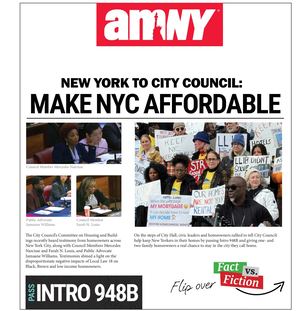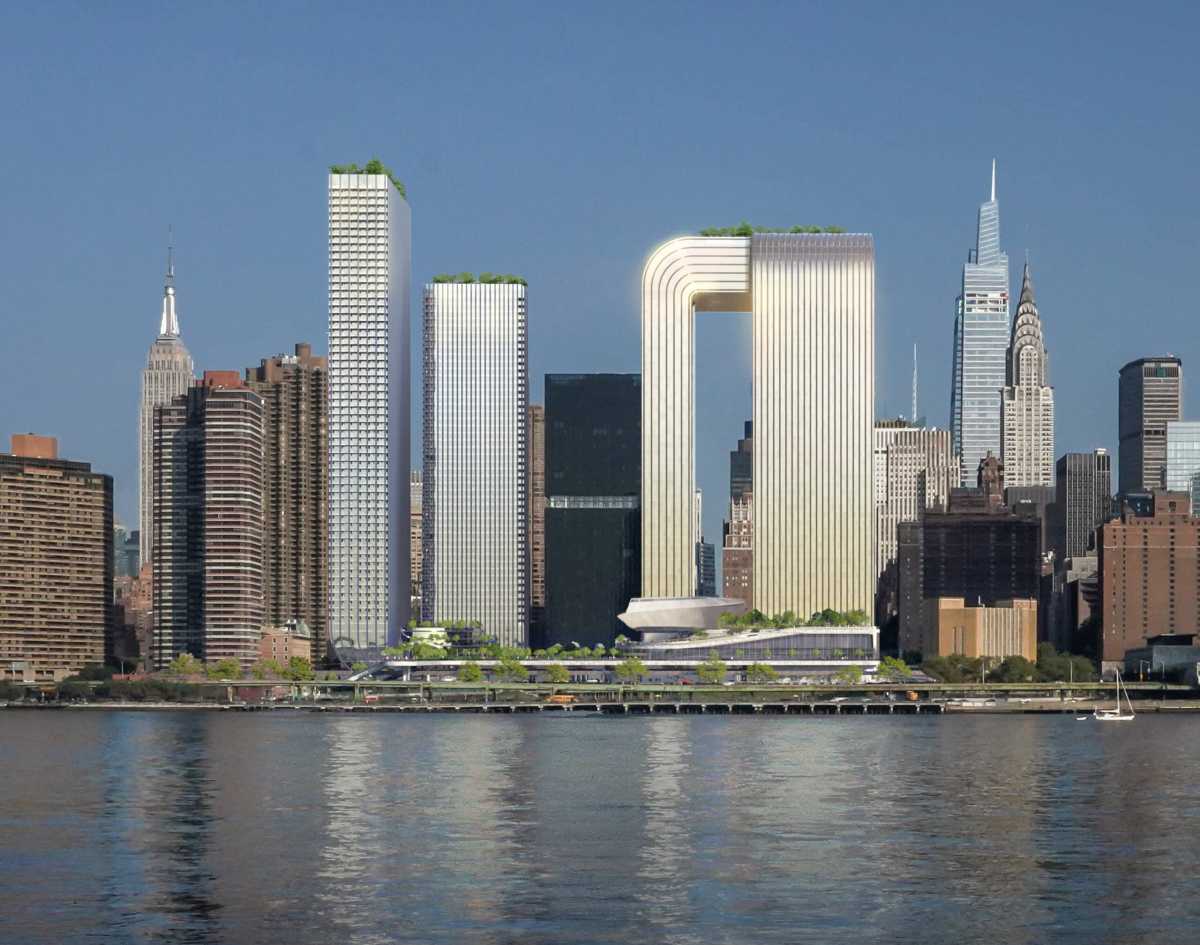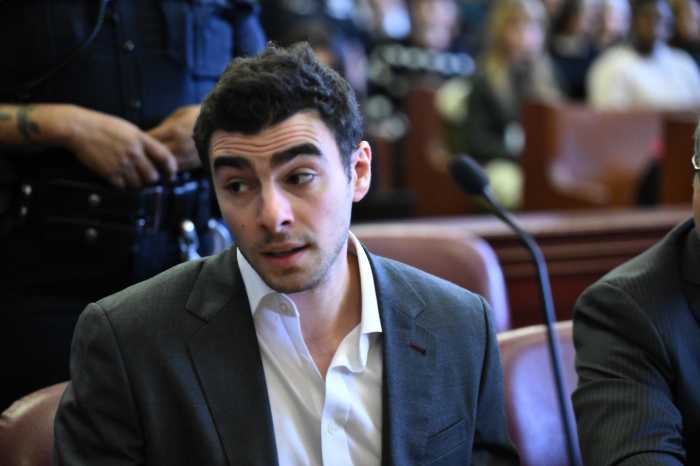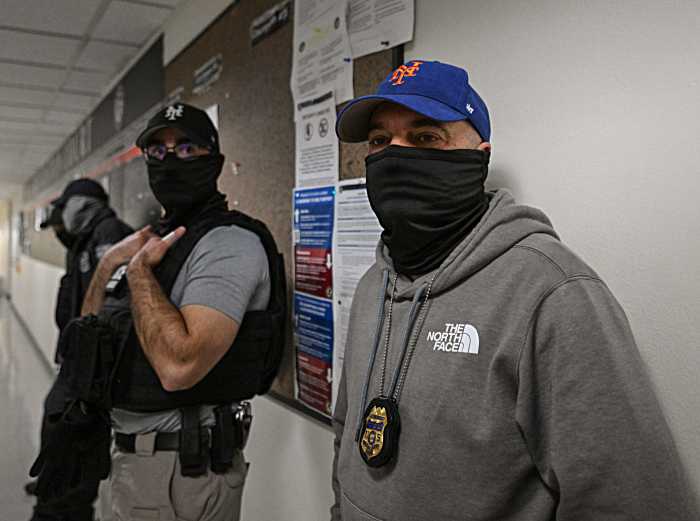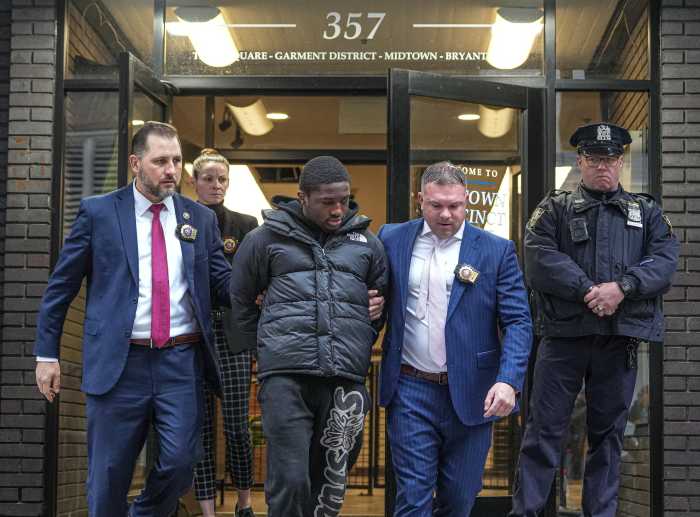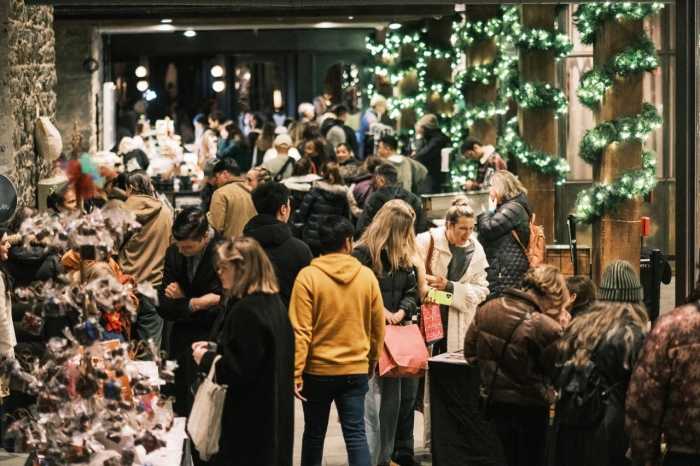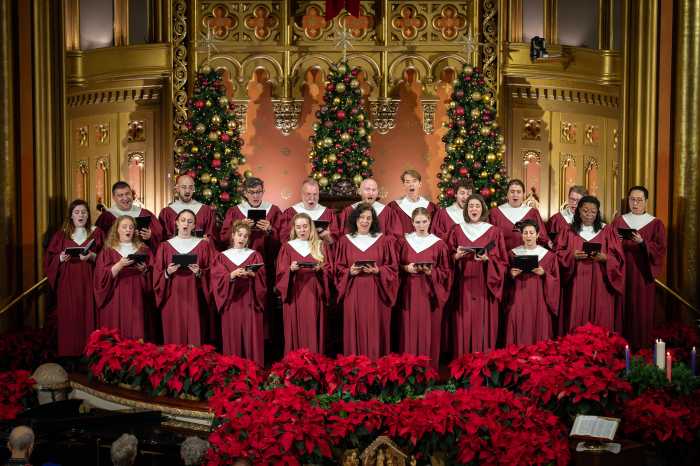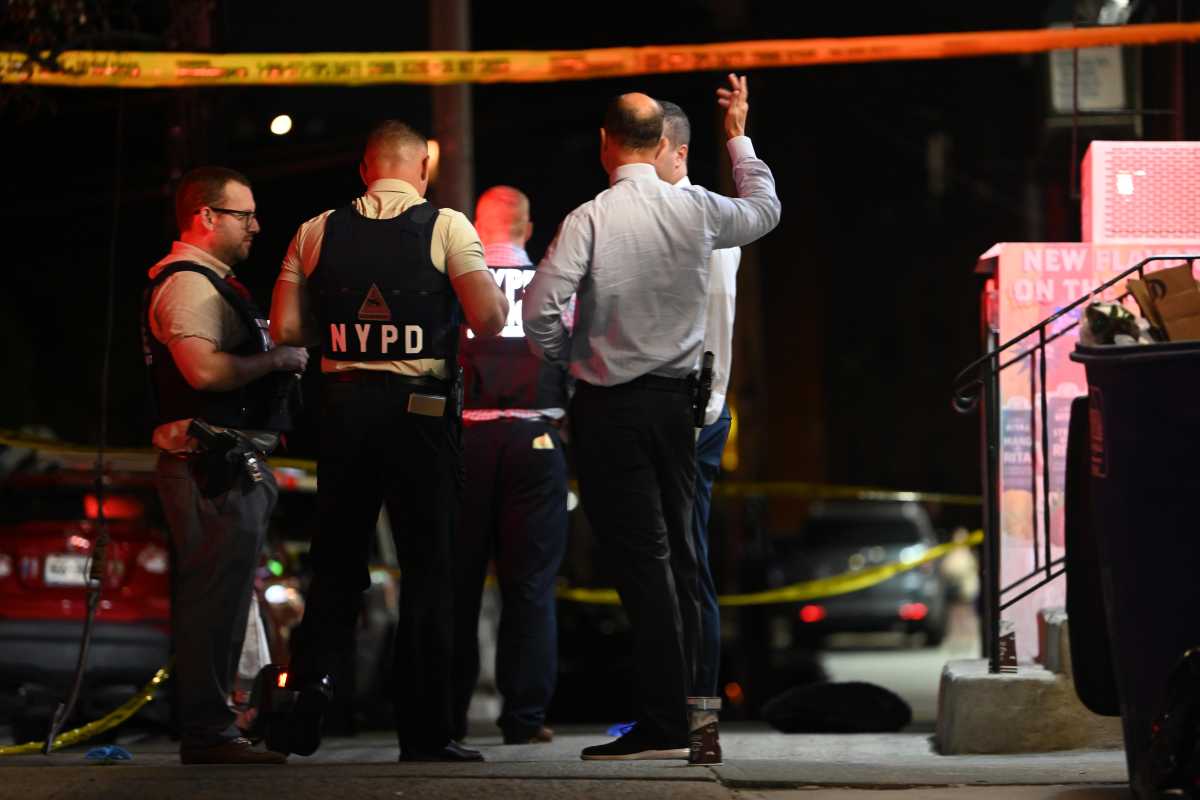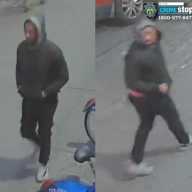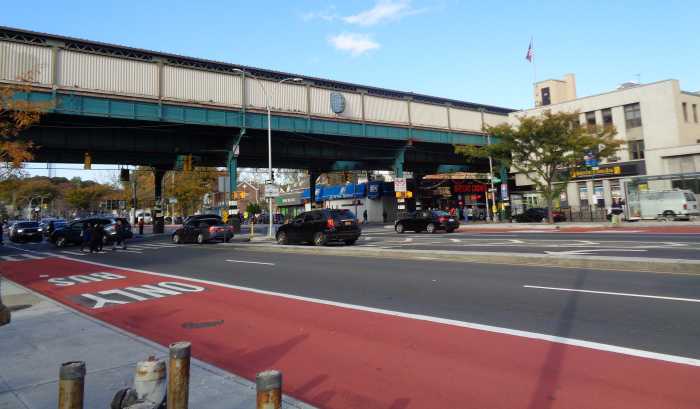Frustrated local residents accused developers of stacking the deck at Monday’s final public hearing on the proposed $11 billion Freedom Plaza casino project in Midtown East, saying employees of Mohegan Sun and the Soloviev Group had “drowned out” neighborhood voices.
More than 170 people testified before the Community Advisory Committee at Scandinavia House on Sept. 15, with supporters outnumbering opponents by more than two to one. Developer employees made up half of the 70% of speakers backing the plan, with some East Side residents, unions, and nonprofit leaders joining in support, citing the promised affordable housing, green space, and thousands of jobs as reasons to back the project.
About 45 of the 120 supporters identified themselves as Mohegan Sun employees who traveled from the company’s flagship casino in Uncasville, CT, while nearly 20 said they were employees of the Soloviev Group. Many touted the benefits of their employers and described Mohegan as a responsible operator. One woman confirmed to the panel that several arrived on a party bus.
“Yes, another person from Mohegan Sun, come visit us, we’re super fun. We took the party bus here,” a worker who did not provide her name said to groans of the few opposing locals who had made it into the packed auditorium by that point.
Dozens of union members also testified, including representatives of IBEW Local 3, SEIU 32BJ, and the Carpenters Union, who argued that the casino and entertainment complex would create stable, good-paying jobs.
Nonprofits, including the National Urban League, Hope Program, Solar One, and Better Chinatown USA, endorsed the project, citing workforce development, cultural programming, and community reinvestment commitments.
The $11 billion development is projected to generate $3.2 billion annually in economic impact and create 17,000 union jobs, including 8,000 permanent positions. Developers said the plan now includes 1,080 apartments, 600 of them designated as permanently affordable, a museum, nearly five acres of public park space, and on-site services such as a grocery store, medical clinic, daycare center, and an NYPD substation.
Before the public comment portion of the meeting, Michael Hershman, CEO of the Soloviev Group, told the CAC that security operations will be led by Michael Browne, former chief of safety and security at the United Nations.
Hersham also highlighted that the $250 million community reinvestment fund will be administered by the National Urban League under its president, Marc Morial, the former mayor of New Orleans. “If we are fortunate enough to receive a license, it’s because our community sees the value that Freedom Plaza can bring,” Hershman said.
‘If we do this, we have to do it right’
Dennis Serrette, executive vice president of the National Urban League, said the developers “really had to convince us” but ultimately demonstrated a commitment to community benefits. “I’m a born and bred New Yorker, with five daughters. This, to me, is personal. If we do this, we have to do it right,” he said.
Some residents agreed. Amanda, who lives nearby, said the development could transform the East Side. “This isn’t just another project,” she said. “It’s the opportunity to turn First Avenue into a destination.”
Joey Poland, a 29-year Mohegan Sun employee, highlighted her employer’s medical insurance and loyalty, saying she felt lucky to work there as a two-time cancer survivor.
“When we’re sick or injured, they’re there for you, they support you, and they make sure you have a job when you are mended,” she said.
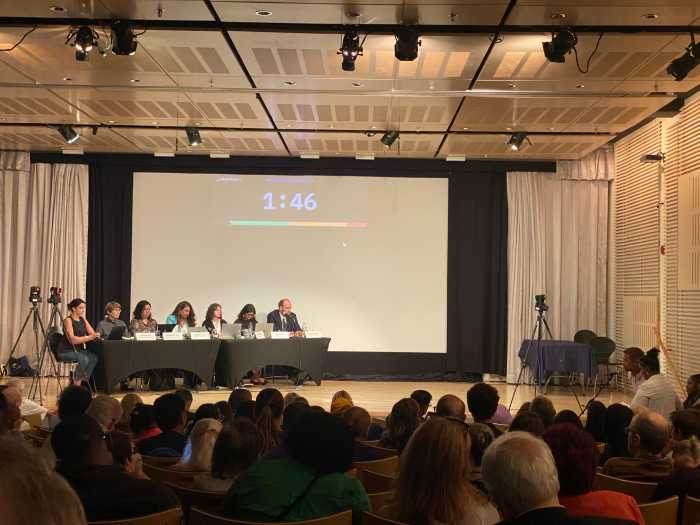
‘We don’t want it’
But opposition from Tudor City and Murray Hill residents, making up about 30% of the given testimony, was more impassioned.
Many said their testimony was overshadowed by speakers with no ties to the neighborhood, accusing the developers of filling the roster with out-of-town employees and union allies.
“I thought I was at the wrong meeting,” one resident who did not identify herself said. “I thought I walked into the Mohegan Sun reunion.”
Mark Harris, who has lived in Tudor City for 50 years, warned the project would overwhelm a quiet residential enclave. “Our neighborhood is being threatened by the casino development,” he said.
His neighbor, Cynita Harris, added, “No member of our community that we have ever spoken with is in favor of a casino put right in front of our face. We don’t want it.”
Opponents cited traffic near hospital facilities, proximity to schools, the risk of gambling addiction, and property values as chief concerns. “We welcome housing, greenspace, retail,” said Elaine Maldonado, another Tudor City resident. “We don’t want a mega gambling site in the basement across the street from our children and our schools.”
Ruth, a Tudor City resident, told the CAC she had bought an apartment there because it is a family-friendly neighborhood, but that the development she sees as being “out of scale” with the area threatens that.
She said she showed up to speak, taking “precious time off work” because many of her neighbors who feel disenfranchised with the process could not: “Whether intended or not, the two committee meetings seem designed to exclude many of us, especially families with children and people who work, and who do not work for Mohegan, a union, or Soloviev.”
“From the start, the deck was stacked with almost identical testimonies by paid employees… It’s as if they do not want our voices to be heard and are uninterested in our opinions, and just want to test our patience, run the clock down, and keep our voices silenced,” said Jenny Jane, resident of ZIP code 10016.
Peter Ansel, who lives half a block from the proposed site, said he was shocked that the “abomination” had gotten this far, saying the CAC had let them down by allowing developers ‘ workers to testify en masse.
“This was not handled well. We are the community, we should be speaking first… It’s not right,” he said, adding that traffic in the area is already “a sh-t show.”
“People are literally going to die because an ambulance won’t be able to get up 1st Ave,” said Ansel.
Traffic and pedestrian flow had been a central point of discussion in earlier hearings, and developers again stressed a pedestrian-first design. Unlike a 2008-approved plan for the site that included curb cuts on First Avenue, the new proposal eliminates vehicular access along that corridor to preserve bus and bike lanes.
Entrances would be located on 38th Street for residents, 41st Street for hotel and entertainment access, and the FDR Drive service road for gaming and parking garage access.
Erica Finan, an engineer with Langon Engineering, said the project would add less than 3 percent to traffic along First Avenue near hospital facilities. She said the Environmental Impact Statement was reviewed by the Department of Transportation and the MTA and relied on conservative assumptions.
To address concerns, developers pledged a transportation monitoring plan with quarterly reviews, free shuttles to Grand Central Terminal and the East 34th Street Ferry, and no on-site employee parking.
The developers said the project would not include a protected bus lane on East 41st Street for the M15 or M42 lines but pledged that service would not be disrupted. The long-distance bus stop at East 39th Street and First Avenue will remain in place. They said that coordination with the MTA is underway to preserve a shortened layover area for up to six buses on East 41st Street, with additional layover space possible on the FDR Drive service road if needed.
Several speakers from the nearby Nathan Straus Houses NYCHA development backed the project, framing it as an opportunity for public housing residents to gain access to jobs and training. They also took aim at their neighbors in Tudor City.
Osio Tero, president of the tenant association, said the benefits outweighed concerns about views or congestion. “We find this project more important than Tudor City losing their river view,” she said.
Edie Menendez, also representing Straus tenants, urged critics to think beyond their own blocks. “Tudor City, open up your doors.”
What comes next?
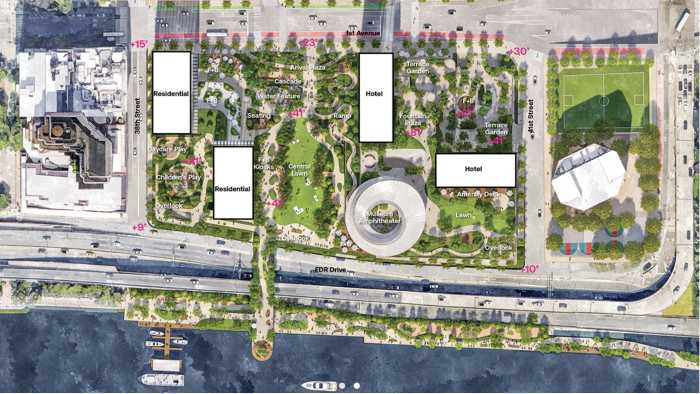
The Community Advisory Committee is tasked with reviewing the application, gauging local support, and determining whether the project should advance to the state Gaming Facility Location Board. The CAC is expected to vote in the coming days, ahead of a Sept. 30 deadline. Freedom Plaza is one of eight proposals competing for three downstate casino licenses.
In a recent Q&A with the CAC, the development team addressed several queries from the committee and noted that the project will include 1,517 parking spaces to prevent spillover into surrounding neighborhoods, even though other Manhattan casino projects have fewer.
Goods deliveries for the project would be handled off-site in Long Island City, while employee shuttles would run every 7-8 minutes during peak hours. The developers also offered to support improvements to the East 37th Street greenway underpass and to work with the city on traffic and sidewalk adjustments.
In addition to the $250 million Community Fund, they also pledged to the CAC a $10 million commitment toward a potential pedestrian skybridge to the Manhattan Greenway. A problem Gambling Resource Center, funded and operated on-site, would be managed in partnership with the New York Council on Problem Gambling.
